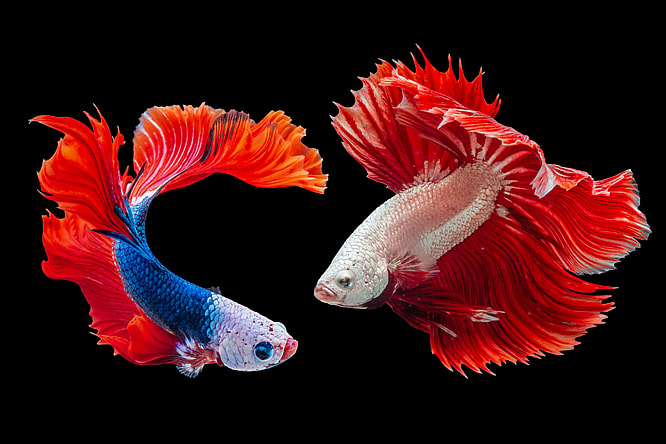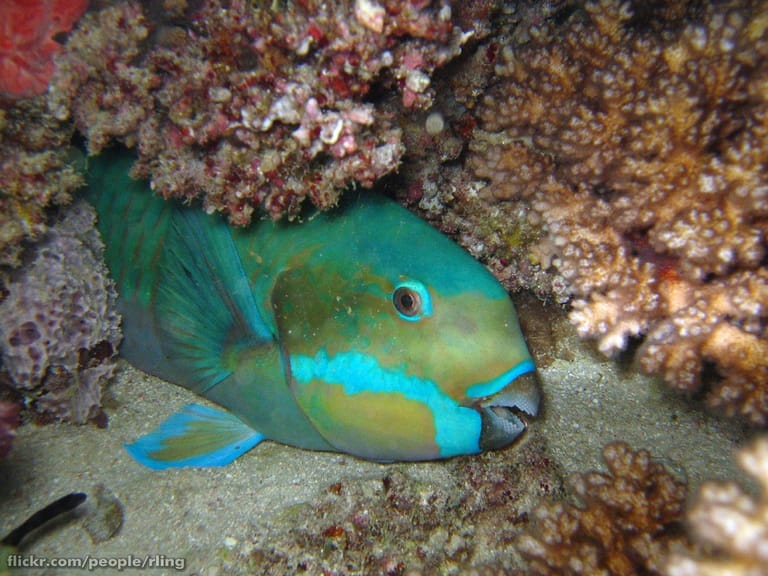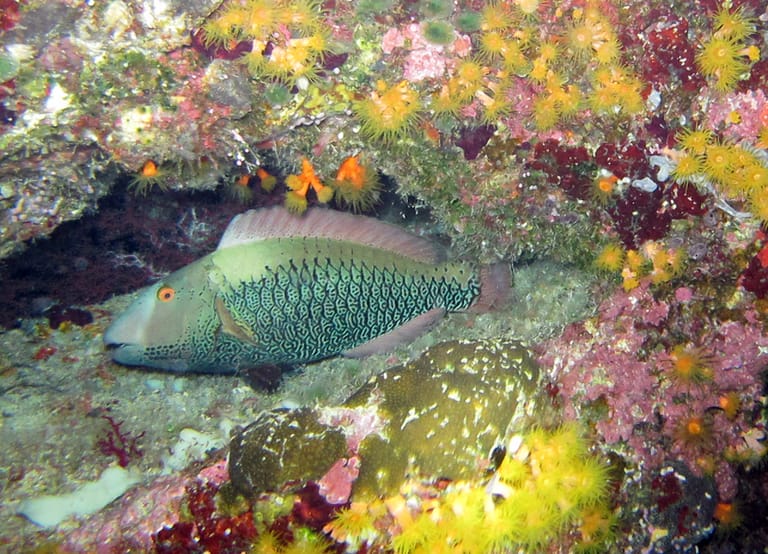
All animals need some sort of rest to rejuvenate their bodies and stay healthy. However, the when, where, and how changes for each species’ sleep patterns. This leads to the question, do fish sleep at night? If so, how?
Researchers have determined that though fish don’t sleep in the conventional human way, they still go to a restful state where they are mostly still and their breathing and metabolic rates slow down. Their brain activity during this time is also lessened.
During this time of rest, some fish float in place or wedge themselves into a secure spot. Some even build a nest for their rest.
However, while fish are completing this kind of rest, they have to remain alert for danger as there are still predators they have to defend themselves from.
So, in essence, fish do sleep, but differently than the way land mammals sleep.
How?

When wondering, “do fish sleep at night?” you first have to consider how they sleep. In many cases, when fish are sleeping, they are still and their breathing slows. A lot of this sleep is similar to the way humans sleep but with some differences. For example, fish also do not close their eyes because they don’t have any eye lids.
Like how humas have different sleep habits to allow our best sleep, so do different species of fish. For example, all fish have to move slightly to keep a flow of oxygen, but certain species of sharks remain moving completely while they sleep to ventilate their gills. Other fish make mucus cocoons to sleep to defend themselves from predators.
It is also thought that a fish’s sleep needs have evolved based on their sleeping environments. For example, surface cavefish sleep more than those who live in deep sea caves.
Read More: 6 Deep Ocean Creatures You’ve Never Seen Before
Brain Patterns
When humans sleep, they have four stages of sleep, two stages of light sleep, one stage of slow-wave sleep which is a deep sleep, and one stage of rapid eye movement (REM) sleep. Although fish do not have a neocortex like humans, researchers have found that fish have two stages of sleep similar to slow-wave sleep and REM sleep.
Many fish follow a sleep-wake cycle that is similar to humans and other animals. Fish circadian rhythms seem to be similar to humans as they are sensitive to light, making many fish species more alert during the day.
However, there are fish that can not see light, such as the deep sea cavefish, and so other factors such as their environment and food contribute to their sleep-wake cycles, pointing to having a circadian rhythm.
Unihemispheric Sleep
Fish get their oxygen as water passes against their gills and they need this oxygen to survive. So, to stay alive, fish need a certain amount of movement which makes it harder to be completely still when sleeping. Some fish can move a fin here and there and that is enough for smaller fish to get the oxygen they need. However, larger fish need to stay in motion to get the oxygen they need to survive, even when they are sleeping. This is known as unihemispheric sleep.
Unihemispheric sleep means that fish can put one half of their brain to sleep while the other half remains active, allowing them to continue to swim while sleeping.
When?

So fish do sleep, but do fish sleep at night? Fish can be either dinurnal, which means they sleep at night, or nocturnal, meaning they sleep during the day. It depends on the species. For example, nocturnal sharks sleep during the day and then search for food that is asleep at night.
Many fish do not sleep when caring for their young to defend their young from dangers. Scientists have also found that some fish, such as Tilapia, don’t start sleeping until they are at least 5 or 6 months old. Fish also don’t sleep when they are migrating as they are not in a set environment that is safe for rest.
Read More: How Smart is a Dolphin?
Where?

Where fish sleep differs for each species based on their needs and safety. Some species lay on the ground or bury themselves in the sand, while others hide in caves or under grottos. Some also drift motionlessly near the surface or nestle into plants or coral.
Certain species have to do more to to protect themselves from threats during their sleep than others. Those fish tend to hide more in the mud or in surfaces where it is harder to see them.
Key Takeaways
So, now we know that fish do sleep, but their sleep patterns are different from those of land mammals. Their cycles are a little different with two stages of sleep instead of four. Their sleep patterns also depend on the environment around them.
One aspect of fish sleep that is completely different from our own is unihermispheric sleep, which allows fish to continue to move while sleeping to get the oxygen they need to survive.
So, even though fish have some of their own patterns to get the rest they need to survive and stay healthy, some fish do in fact sleep at night.


